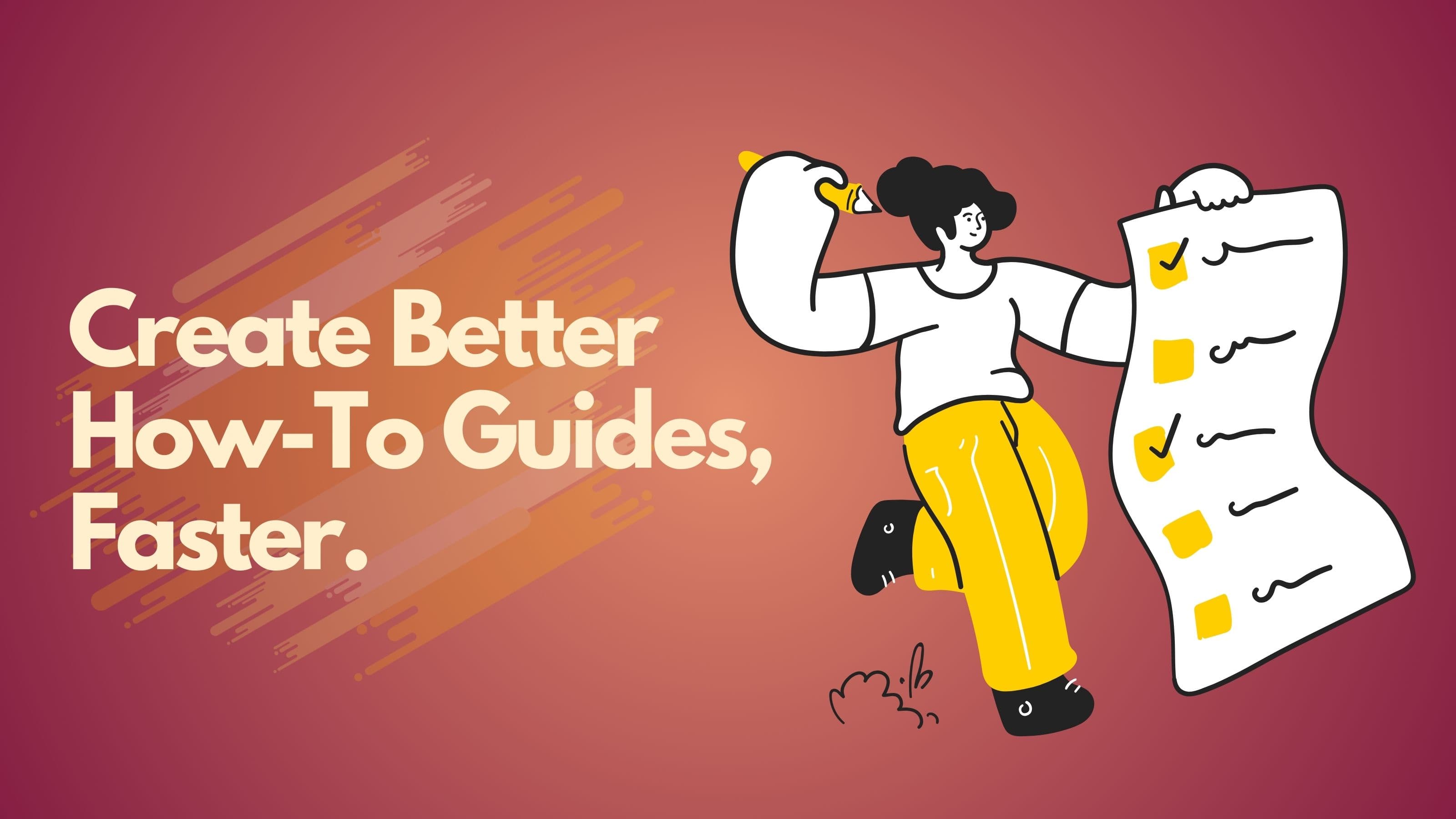Why Traditional Documentation Is Failing Your Team
How-to guides save businesses. 67% of customers would rather solve problems themselves than contact support, but most companies still cling to outdated documentation methods.
This gap leads to 30–50% of support tickets covering the same issues over and over, while onboarding wastes up to 5 hours per new hire.
The real cost? Drained resources, inflated support budgets, and frustrated users who might abandon your product completely.
Static PDFs, long videos, and scattered knowledge bases simply can't match what modern users expect.
What if you could create step-by-step materials that slashed repetitive tickets by 40% and sped up onboarding by 60%?
That’s where the GUIDE framework comes in — a proven system that turns static documentation into something your users will actually use and appreciate.
The GUIDE Framework for Creating Powerful How-to Guides
Great how-to guides aren’t just instructions — they’re tools that cut down support volume while making users happier. Here's a framework that actually works:
Gather insights from user behavior
Use clear step-by-step structure
Integrate multimedia elements
Design for maximum interest
Evaluate and adjust based on data
This approach tackles both sides of the documentation problem: understanding what users genuinely struggle with, and presenting information in a way they can easily follow.
Research from Forrester shows good self-service resources can cut support costs by up to 80%, while boosting satisfaction by 20%. With Guidejar, you can implement this framework without extra work — it records your workflow automatically.
Step 1: Gather Key Insights from Users
"I've documented everything — why are people still asking the same questions?"
Before creating a single guide, understand what’s actually confusing your users — your assumptions might be wrong.
Check your support logs and chat history. Tools like Zendesk Explore help you spot:
Common topics (10%+ of tickets)
Long resolution times
Multiple follow-up questions
Some users struggle silently. User interviews can uncover hidden friction. Watch how users complete tasks — the confusion becomes obvious.
Start with high-impact, high-frequency problems.
Step 2: Create Clear Step-by-Step Instructions
People process information best when it’s in small, actionable chunks.
Each step = one action. For example:
❌ Too vague: “Configure your settings and connect your account to start using the dashboard.”
✅ Crystal clear:
Click the Settings gear icon in the top-right
Select Account from the dropdown
Click Connect Account
Enter your credentials and click Confirm
NNG research shows users scan content. So make guides scannable with:
Numbered lists
Visual callouts (arrows, highlights)
White space
Short, active sentences
Keep steps brief — users decide in 8 seconds if they’ll continue.
Step 3: Add Powerful Visual Elements
Text alone doesn’t cut it. Visuals boost comprehension and memory.
Screenshots = orientation
GIFs = quick interaction
Videos = deeper walk-throughs
Brain Rules research says visuals are processed 60,000x faster and boost retention by 65%.
Guidejar even supports AI Voiceovers in 50+ languages — great for international users and accessibility (WCAG standards).
Step 4: Design Experiences That Keep Users Moving
Even the best guide fails if users drop off halfway.
Add interaction to keep momentum:
Progress bars
Checkboxes
Expandable sections
Tooltips
“Progress indicators trigger our brain’s reward system.” – Columbia University
Personalization also helps. Use {{UserName}}, {{CompanyName}}, etc., to make the guide feel tailored.
Tools like Guidejar include these by default — and reduce guide abandonment by up to 25%.
Step 5: Evaluate Results and Adjust Based on Data
The best guides are updated continuously.
Track:
Completion rate
Time per step
Ticket volume for related issues
User feedback scores
Small changes = big impact. One company increased completions by 15% just by changing a progress bar from blue to green.
Review top guides monthly; the rest quarterly.
Strategic Applications: When to Use Step-by-Step Guides
Internal Uses:
New hire onboarding – Cut training time
Process docs – Improve consistency
Software rollouts – Smooth adoption
Cross-team knowledge sharing – Break silos
Customer-Facing Uses:
Onboarding – First-touch feature guidance
Feature adoption – Help users discover more value
Troubleshooting – Clear resolution steps
Upgrade paths – Guide transitions smoothly
Criteria | Traditional PDFs | Video Tutorials | Interactive Guides |
User Engagement | Low | Medium | High |
Update Ease | Poor | Poor | Excellent |
Support Ticket Reduction | 10–15% | 15–25% | 30–40% |
Time-to-Value | Days/Weeks | Days | Minutes |
Common Mistakes to Avoid When Creating How-to Guides
1. Walls of Text
❌ Long paragraphs ✅ Break into short sections + bullets
UX research: Text walls reduce comprehension by up to 30%.
2. No Visual Support
Words = friction. Visuals = clarity.
✅ Include a visual every 3 steps. The Picture Superiority Effect proves visuals improve memory.
3. Non-Interactive Content
Static docs = passive readers. Interactive = active users.
✅ Add checkboxes, tooltips, progress bars.
4. No Localization
English-only docs leave global users behind.
✅ Translate with AI tools. CSA research: 76% prefer content in their native language.
Automating Guide Creation with Guidejar
"Who has time to make guides?"
I used to spend 8 hours per guide. Now? Less than 1 — using Guidejar.
Here’s the workflow:
Record – Use the Guidejar Chrome extension
Customize – Add branding, edit steps
Share – Link, embed, or export instantly
At my last company, this approach:
Cut support tickets by 42%
Freed up the success team
Enabled 5x more guides in less time
Conclusion: Better Support and Onboarding Starts Here
Step-by-step guides are a game changer. Use the GUIDE framework to:
Reduce support tickets
Accelerate onboarding
Improve user satisfaction
40% fewer tickets. 60% faster onboarding. Happier users.
👉 Try Guidejar and start building better guides today.




